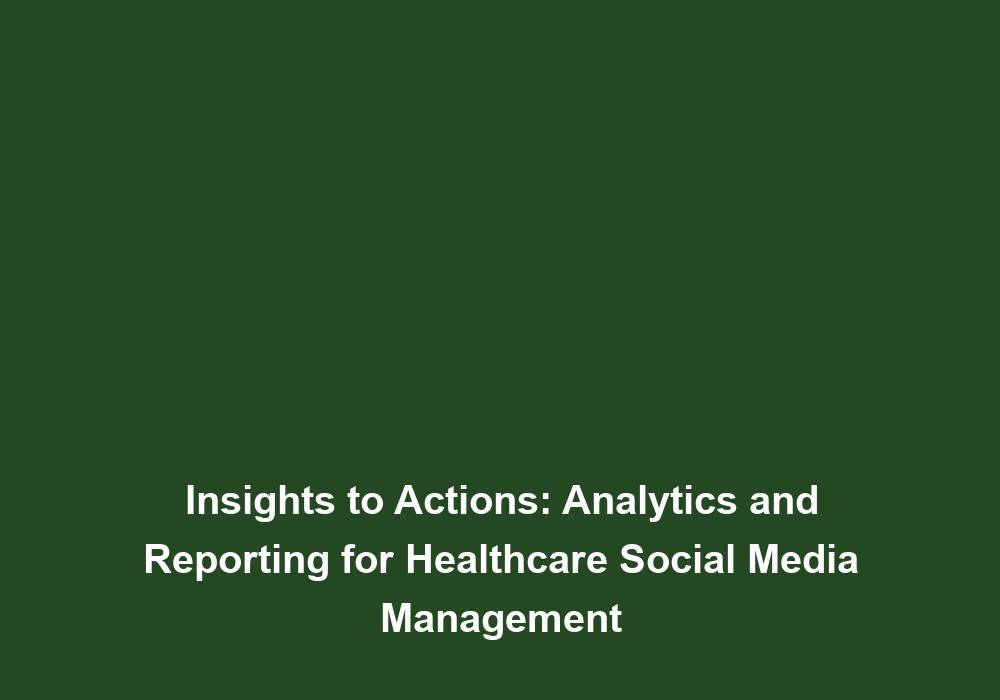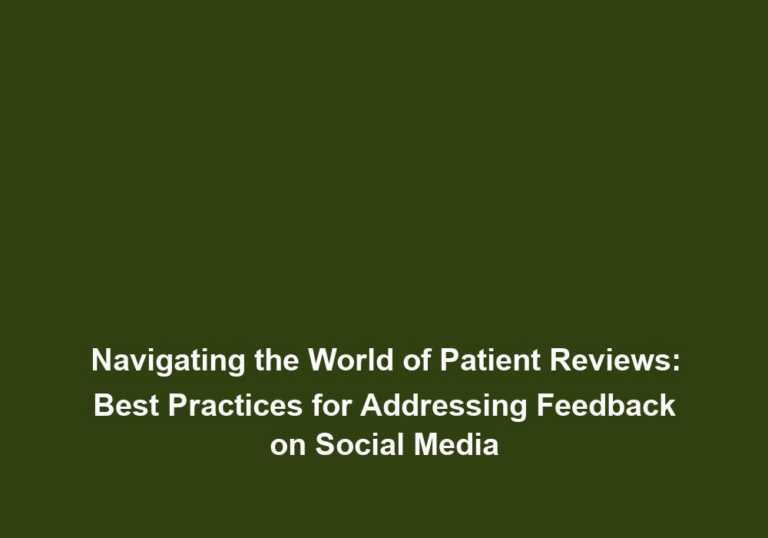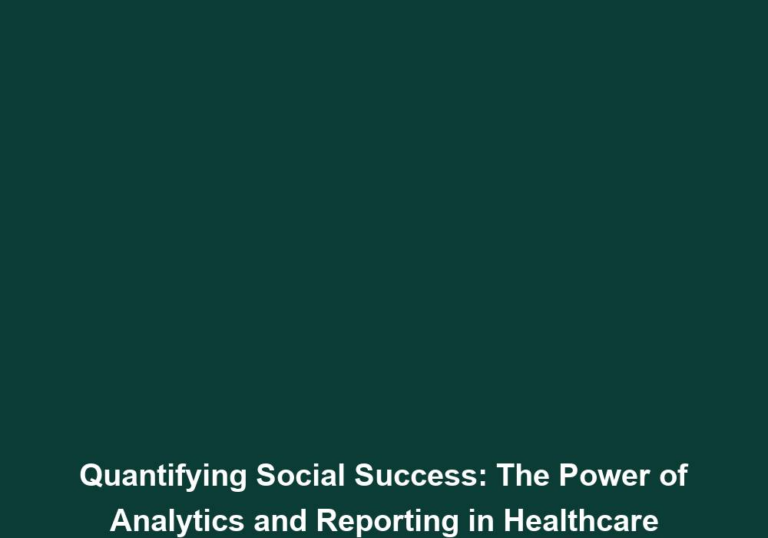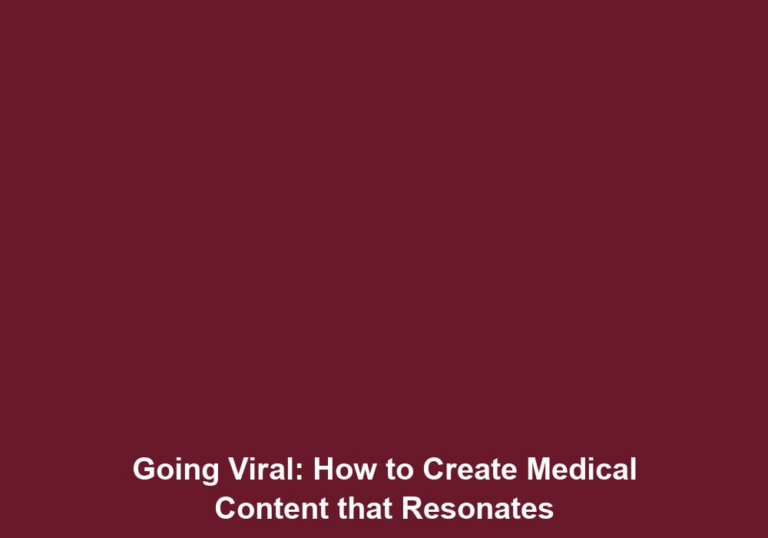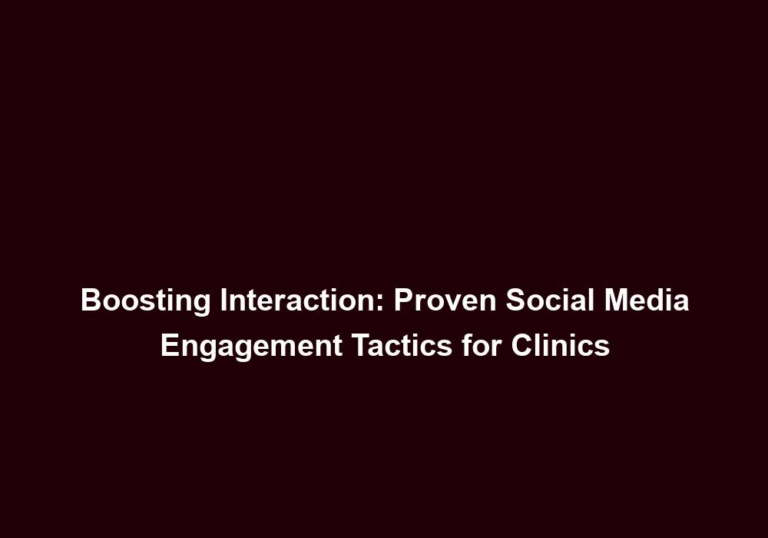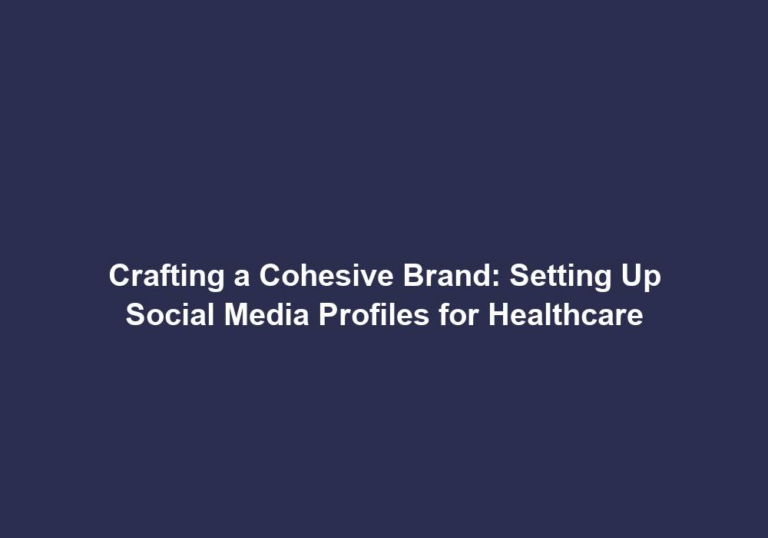Insights to Actions: Analytics and Reporting for Healthcare Social Media Management
In today’s digital age, social media has become an integral part of our lives. From personal connections to business promotions, social media platforms play a significant role in reaching out to a wider audience. This is especially true for the healthcare industry, where the use of social media has skyrocketed in recent years. Healthcare organizations are utilizing social media platforms to connect with patients, share valuable information, and build strong online communities.
However, merely having a presence on social media is not enough. To make the most out of these platforms, healthcare organizations need to leverage analytics and reporting tools to gain insights and turn them into actionable strategies. In this article, we will explore the importance of analytics and reporting for healthcare social media management and how it can help organizations thrive in the digital landscape.
The Power of Analytics in Healthcare Social Media Management
Analytics holds the key to understanding the impact of social media efforts. It provides healthcare organizations with valuable insights into the performance of their social media campaigns, enabling them to make data-driven decisions. Here’s why analytics is crucial for healthcare social media management:
1. Measuring Reach and Engagement
Effective social media management begins with understanding the reach and engagement of your content. Analytics tools allow healthcare organizations to track the number of impressions, likes, shares, and comments on their posts. These metrics provide a comprehensive overview of how well the content is resonating with the target audience. By analyzing these statistics, organizations can identify the type of content that generates the most engagement and tailor their future posts accordingly.
Additionally, analytics tools can provide deeper insights into reach and engagement by segmenting the data based on factors such as time of day, day of the week, or specific demographics. This level of granularity allows organizations to identify the optimal posting times and target specific audience segments more effectively.
2. Identifying Key Demographics
Understanding your audience is vital for creating relevant content. Analytics tools provide healthcare organizations with demographic data such as age, gender, location, and interests of their social media followers. This information helps organizations gain valuable insights into their target audience, allowing them to develop content strategies that resonate with specific demographics.
By analyzing the demographic data, healthcare organizations can identify patterns and trends in their audience’s preferences and behaviors. This knowledge can inform content creation, ensuring that the organization delivers the right message to the right people at the right time. For example, if the analytics reveal that a significant portion of the audience consists of young adults interested in fitness, the organization can create content focused on healthy lifestyle tips or exercise routines to engage this specific demographic.
3. Tracking Website Referrals
Social media is a powerful tool for driving traffic to healthcare websites. Analytics tools can track the number of referrals from social media platforms to a website. This data is crucial for evaluating the effectiveness of social media campaigns in terms of generating website traffic. By monitoring website referrals, healthcare organizations can optimize their social media strategies to increase traffic and conversions.
In addition to tracking the number of referrals, analytics tools can also provide insights into the specific pages or content on the website that receive the most traffic from social media. This information helps organizations understand what type of content resonates with their social media audience and can guide the creation of future content to drive even more traffic and engagement.
4. Monitoring Brand Reputation
Social media can significantly impact a healthcare organization’s brand reputation. Analytics tools enable organizations to monitor brand mentions, sentiment analysis, and customer feedback on social media platforms. This information helps healthcare organizations identify any negative sentiment or potential issues surrounding their brand and allows them to address them promptly. By actively monitoring brand reputation, organizations can protect their image and enhance patient trust.
Analytics tools can provide real-time alerts or notifications when there is a significant change in brand sentiment or an increase in negative mentions. This allows healthcare organizations to respond quickly and effectively, mitigating any potential damage to their reputation. Additionally, by analyzing the sentiment analysis data over time, organizations can identify patterns and trends in how their brand is perceived and make strategic adjustments to improve their overall reputation.
Leveraging Reports for Actionable Insights
Apart from analytics, reports play a crucial role in healthcare social media management. Reports consolidate data from various sources into a comprehensive format, providing healthcare organizations with actionable insights. Here are some key benefits of leveraging reports for healthcare social media management:
1. Performance Evaluation
Reports provide a holistic view of social media performance. They allow healthcare organizations to evaluate the success of their social media campaigns and identify areas for improvement. By analyzing key metrics such as reach, engagement, and conversions, organizations can refine their strategies and optimize their social media efforts for better results.
Reports can also provide comparative data, allowing organizations to benchmark their performance against industry standards or their own past performance. This benchmarking helps identify areas where the organization is excelling or falling behind, enabling them to make data-driven decisions for future campaigns.
2. Identifying Trends and Patterns
Reports highlight trends and patterns in social media data. They enable healthcare organizations to identify which types of content, topics, or hashtags are resonating with their audience. By understanding these trends, organizations can create relevant and timely content that captures the attention of their target audience. Additionally, reports can also uncover patterns in audience behavior, helping organizations tailor their messaging for maximum impact.
Reports can provide visual representations of data through charts, graphs, or heatmaps, making it easier for healthcare organizations to identify patterns and trends at a glance. These visualizations can also aid in presenting the data to stakeholders or team members, facilitating effective communication and decision-making.
3. Benchmarking Against Competitors
Reports allow healthcare organizations to benchmark their social media performance against their competitors in the industry. By comparing metrics such as audience growth, engagement rate, and share of voice, organizations can gain insights into their competitive position. This information helps healthcare organizations identify areas where they are excelling or falling behind, enabling them to refine their social media strategies and stay ahead in the digital race.
Benchmarking against competitors can provide valuable insights into industry trends and best practices. By analyzing the performance of competitors, healthcare organizations can identify opportunities for improvement or innovation in their own social media strategies, ensuring they stay relevant and competitive in the ever-evolving digital landscape.
4. Demonstrating ROI
Reports play a vital role in demonstrating the return on investment (ROI) of social media efforts. By highlighting key metrics such as leads generated, website conversions, and cost per acquisition, reports provide tangible evidence of social media’s impact on the organization’s bottom line. This information is valuable when presenting social media strategies to stakeholders and securing budget allocations for future campaigns.
In addition to ROI metrics, reports can also showcase the qualitative impact of social media efforts, such as increased brand visibility, improved customer satisfaction, or strengthened community engagement. This comprehensive view of the benefits of social media can help healthcare organizations showcase the value of their social media initiatives and gain support from stakeholders for continued investment.
In conclusion, analytics and reporting are indispensable tools for healthcare social media management. By harnessing the power of analytics, healthcare organizations can gain valuable insights into their social media performance, audience demographics, and website referrals. Reports, on the other hand, consolidate this data and provide actionable insights for refining strategies, identifying trends, benchmarking against competitors, and demonstrating ROI. By leveraging analytics and reporting effectively, healthcare organizations can thrive in the digital landscape, connect with patients, and build a strong online presence.

